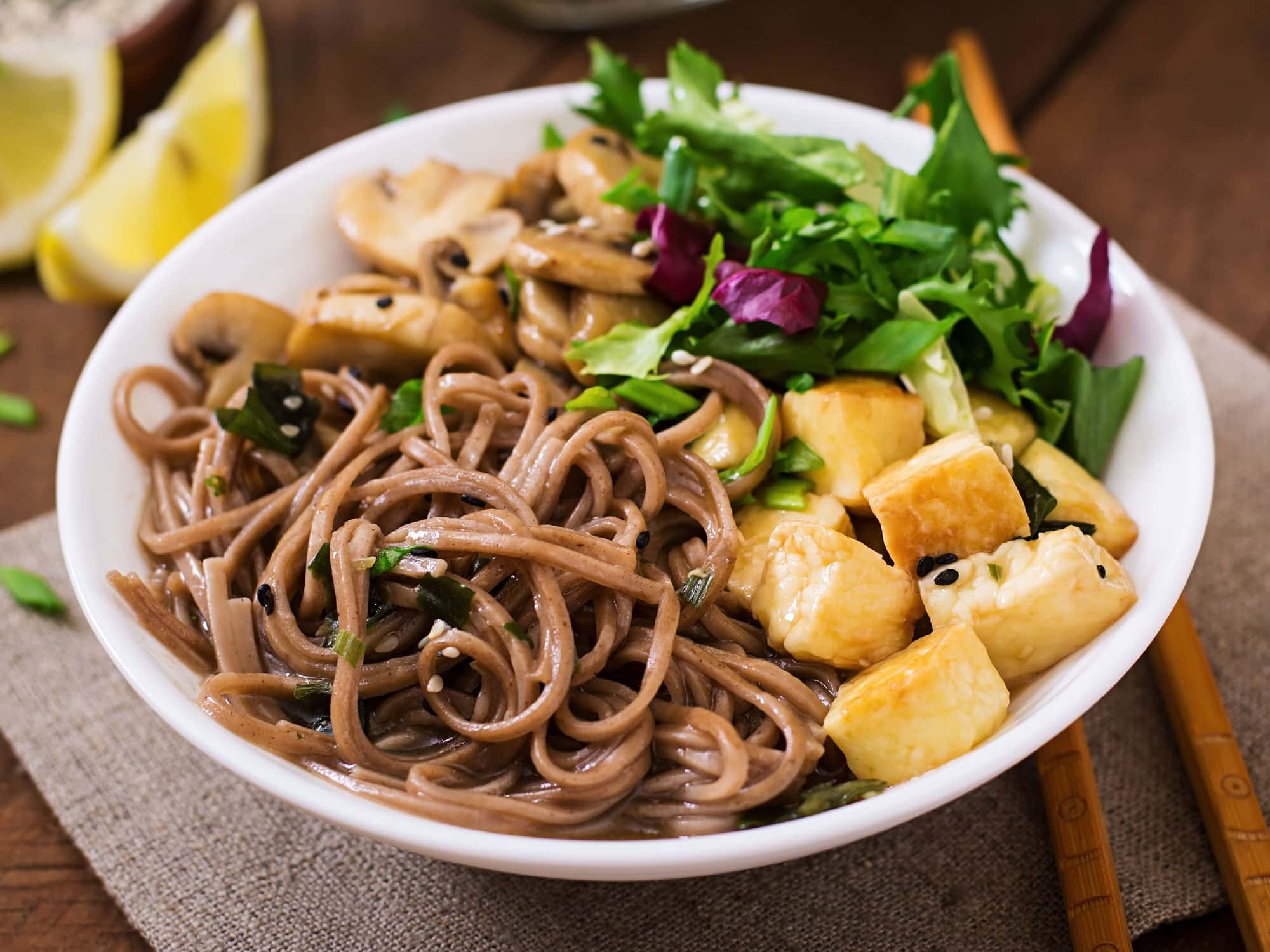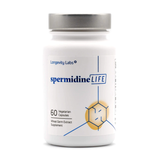
The Okinawa Diet is becoming more well-known and is being explored for its vast health benefits. The Okinawan diet stems from people who live in Okinawa, which is an island located off of the coast of Japan between east China and the Philippine Seas. It is the largest of the Ryukyu Islands and is one of the five regions of the world known as a Blue Zone.
People who live in Blue Zones tend to live exceptionally long and healthy lives when compared to the rest of the world’s population. The main contributor to that is the diet they consume.

What Are The Blue Zones?
Blue Zones are certain geographic regions in the world where people live healthier and longer lives. They are also known as “longevity hotspots.”
Even the elderly in these Blue Zone regions have a better quality of life and are more active and energetic than the United States. They don’t have the chronic diseases that are known in the West and contributed to aging. They show what healthy aging can actually look like.
Diet is only part of the traits of people who live in Blue Zones. Other characteristics include:
- Staying active throughout their life (they lead a less sedentary lifestyle)
- Remaining positive about aging
As for the Okinawas diet recipes, people who live in blue zones tend:
- To eat less overall (especially compared to people who live in the West)
- Eat more fruits and vegetables
- Eat healthy fats
When you eat like an Okinawan, you have the ability to live longer and healthier lives by providing a variety of nutrient-dense foods and encouraging a balanced lifestyle.
Is Okinawa One Of The Blue Zones?
We know that people who live in Blue Zone regions have some of the highest life expectancy rates in the world and Okinawa is part of that. The people of Okinawa eat primarily whole plant foods, including vegetables and beans. From that, most calories come from purple and orange sweet potatoes.
Our next question, do Okinawans eat meat? Less than one percent of the Okinawa diet consists of meat, dairy and eggs as well as fish. The Okinawa Diet Plan is very anti-inflammatory, but also high in antioxidants.
People who eat this way not only live longer, but remain healthy as they age. The people of Okinawa have fewer heart disease-related deaths than the United States as well as fewer deaths from certain types of cancers such as colon, breast and prostate. This shows the Blue Zone lifestyle is one to consider.
Why Are Okinawans So Healthy?
So what is it about Okinawans that keeps them so healthy? Is it just genetics? While the genetics of Okinawans contributes in preventing inflammatory and autoimmune diseases, when they left their environment and changed their lifestyle habits, they lost their longevity.
This shows there is more to Okinawans’ health than just genetics. The Okinawan diet meal plan diet and overall lifestyle are major factors in maintaining a healthy and long life.
Okinawans Life Expectancy
Living to be 100 is common for the Okinawa life expectancy. There are about 35 centenarians for every 100,000 inhabitants. This is five times more than the rest of Japan, which is already well known for long life expectancy.
Why Do Okinawans Live Longer?
The Okinawan secret to a long life can be traced to three things:
- Eating a certain diet
- Remaining physically active
- Staying positive
They also tend to not smoke and only drink moderately.
Okinawans not only eat healthier, but they also eat fewer calories. So, how many calories do Okinawans eat? Usually only about 1,200 a day compared to Americans who tend to eat closer to 2,000 calories a day. They follow a cultural practice of only eating until about 80 percent full, also known as Hara Hachi Bu.
All of these habits lead to:
- Better heart health
- Lower risk of developing cancer
- Healthier bones

Is The Okinawan Diet Healthy?
Being that the Okinawan Diet leads to fewer heart disease-related and cancer deaths, the Okinawan diet is very healthy. Unfortunately, some Western eating styles have made their way to the island and some of the younger generations aren’t following the traditional Okinawan diet so they won’t reap the same health benefits.
What Do Okinawans Eat In A Day?
Most Okinawans eat a mainly vegetarian diet. They eat less seafood than most of Japan, but also eat almost 2-3 servings of rice a day. The rice is eaten with a lot of vegetables though.
Here is what they traditionally eat:
Vegetables
At least seven servings of vegetables a day (about 58-60% of their diet). They include sweet potatoes, bean sprouts, onions, carrots, cabbage, radish and green peppers are prominent as are dark green vegetables.
Grains
Up to seven servings of grains. Including noodles, bread and rice, with many being whole grains)
Fruit
At least 2-4 servings of fruit. This includes citrus fruits, pineapples, bananas, papayas and mangoes
Soy
Soy-based foods such as tofu and miso soup.
Green tea and other teas
They drink at least three cups a day. They also flavor teas with hibiscus and mugwort.
Omega-3s
Fish rich in omega-3s up to three times a week.
Meat, poultry and eggs account for only 3 percent of the diet. Okinawans don’t eat a lot of dairy either. They also use salt sparingly and use mineral-rich local sea salt. They also tend to use turmeric to flavor dishes, which has powerful anti-inflammatory properties.
Frequently Asked Questions About The Okinawa Diet
There are a lot of simple questions about the Okinawa Diet and we hope to clear some of those up here:
How Many Times A Day Do Okinawans Eat?
Curious how many times a day do Okinawans eat? Okinawans tend to eat three times a day, but they stop when they are 80 percent full. It’s more about what the meals consist of and how much they eat than when they eat that makes up the health benefits of the diet.
What Do You Eat For Breakfast On A Okinawa Diet?
Okinawans traditionally eat miso soup with spinach or even the occasional egg with rice for breakfast.
Do Blue Zones Like Okinawans Eat Dairy?
It can vary regionally, but typically blue zone diets are mainly plant-based. Dairy is hardly ever consumed.
What About Eggs?
Again, eggs are not consumed very often, only about 2-4 times a week. It is usually just a side to a plant-based dish.
Do Blue Zones Drink Coffee?
People living in Blue Zones do consume coffee, but the main beverage choices consist of water and tea. Some do drink up to 3 cups of black coffee a day.
How Often Do Okinawans Eat Meat?
Meat is consumed, but not regularly. For example, they will eat pork, but will cook it for days to help rid most of the fat
Okinawa Diet Vs Keto Diet
While both Okinawa and Keto diets have health benefits, they are vastly different. One of the main differences is that Keto diets avoid root vegetables, which are a main component of Okinawan diets. Fruits are also avoided on Keto.
Keto diets include a lot of meat, eggs and fish which are rarely consumed in Okinawa.
Okinawa Diet Vs Paleo Diet
Paleo diet focuses more on the quality of food than the quantity and includes whole foods that could be obtained mostly by hunting and gathering. The whole food part is similar to Okinawa.
However, paleo diets limit legumes and grains which are consumed in the Okinawa diet. It also limits certain kinds of vegetables
Okinawa Diet Vs Mediterranean Diet
Both are pretty similar, but the Mediterranean diet consumes more seafood than the Okinawa diet, which is more plant-based.
Both also consume healthy carbohydrates from whole foods like sweet potatoes and lentils. However, the Okinawa diet is lower in refined carbohydrates. The Mediterranean diet allows for more simple carbs like grains, pasta and bread.
Okinawa Intermittent Fasting For Longevity
Okinawans tend to eat less food throughout their day. As mentioned before, they eat until they are 80 percent full. This gives the body time to heal and repair instead of constantly digesting food.
One way to ensure you are only eating until you are 80 percent full is conscious eating. This means no distractions. When people are distracted, they are not as aware of how much food they are eating.
Conscious eating and only eating until 80 percent full also triggers autophagy, which is the body’s way of cleaning out damaged cells in order for newer and healthier cells to be regenerated. Autophagy can be further triggered with appropriate supplements.
Supplements To Create Autophagy In the Body
There are a few supplements that can trigger autophagy, including spermidine. It is a polyamine, which is an organic compound that has more than two amino groups. Spermidine counteracts aging while promoting longevity.
How Spermidine Is Use For Autophagy
As a polyamine, spermidine is a molecule that is found in every cell of the body and assists by using up energy stores to promote cell renewal. Spermidine is found in foods, but many people don’t consume enough especially as they age and the body requires more. That’s where spermidineLife® comes in. Look into spermidineLife® today for a more healthy tomorrow.
Listen to this article:







